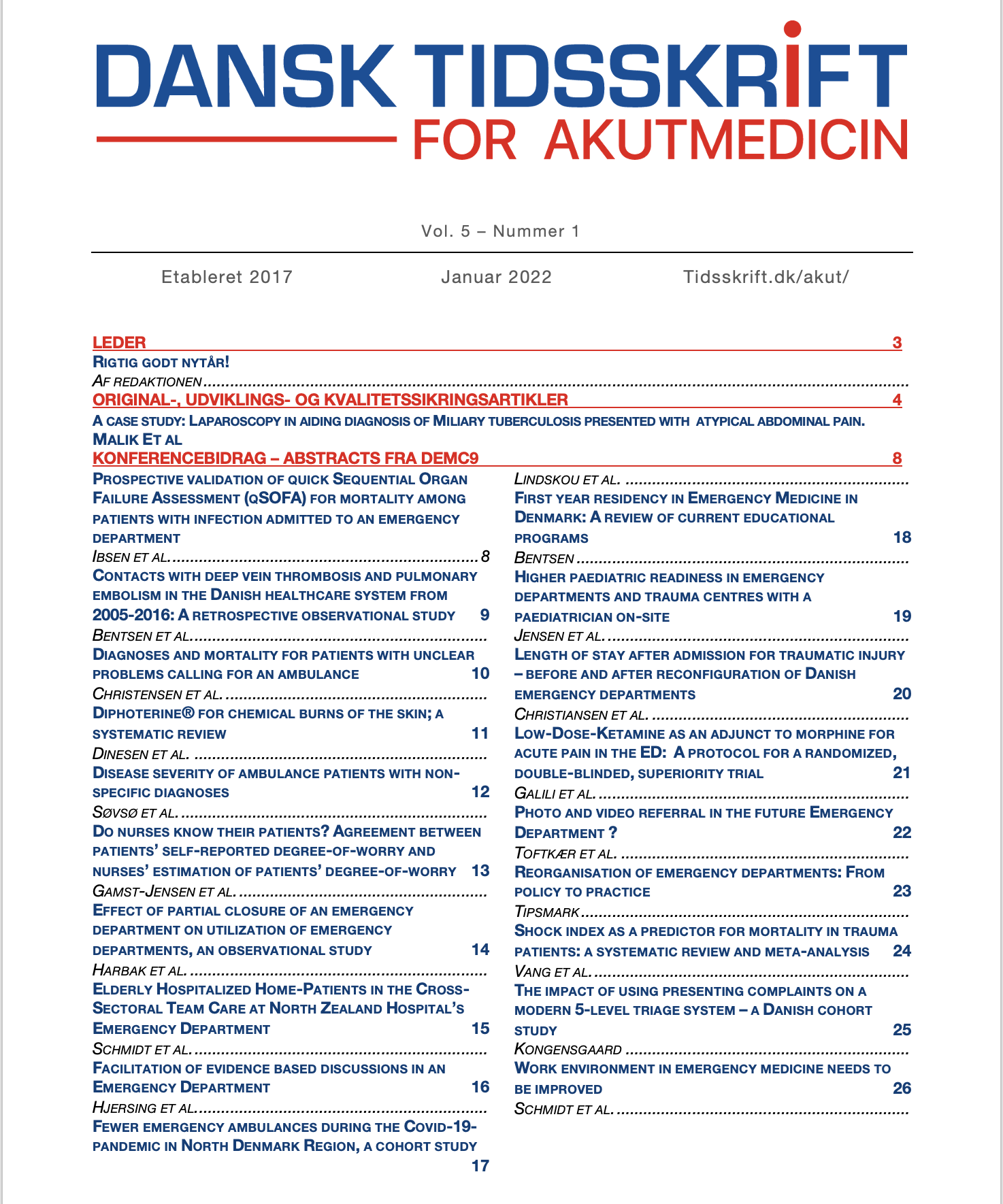Resumé
Danish patients calling the Emergency Medical Services (EMS) with unclear problems are assigned a Danish Index for Emergency Care (DI) criteria called ‘unclear problem’. Previous Danish studies found ‘unclear problem’ in 17% and 19% of all emergency calls. In the Emergency Departments, unclear problems identified as non-specific symptoms are well documented. We investigated EMS patients given an ‘unclear problem’ DI-criteria prehospitally, their hospital discharge diagnoses and 1-day and 30-day mortality rates.
Population-based observational cohort study investigating 7,935 EMS patients who received the DI-criteria ‘unclear problem’ upon an emergency call and who were brought to hospital in the North Denmark Region during January 1st, 2016 – December 31st, 2018. Outcome variables were; number of emergency ambulances dispatched, ‘unclear problem’ DI-criteria, and vital status (dead or alive) 30 days after hospital contact. We evaluated the association between ICD-10 diagnosis chapters and mortality adjusted for age, gender, and comorbidity. ICD-10 chapters 18: “Symptoms, signs and abnormal clinical and laboratory findings, not elsewhere classified” and 21: “Factors influencing health status and contact with health services” were defined as ‘non-specific diagnoses’.
All ICD-10 chapters were represented in the discharge diagnoses. The majority (40.4%) were non-specific diagnoses. Common discharge diagnoses were circulatory (9.6%), injuries and poisoning (9.4%), and respiratory diseases (6.9%). Overall mortality rates were for 1-day and 30-day 2.3% (n=181) and 7.1% (n=566), respectively. Day 1 mortality rates were highest for circulatory diseases (8.6%), infections (5.4%), and respiratory diseases (4.0%). Mortality on day 30 was 2.6% and 4.1% for non-specific diagnoses, whereas circulatory, respiratory diagnoses and infections exhibted highest mortality rates. Risk of mortality was associated with age and comorbidities and when adjusted for these confounders, mortality rates decreased for all diagnoses.
EMS patients assigned ‘unclear problem’ and brought to the hospital received diagnoses from all ICD-10 chapters, the majority with non-specific diagnoses, followed by injuries and poisoning, circulatory and respiratory diseases. The latter two groups exhibited the highest crude mortality rates, decreasing substantially when adjusted for age and comorbidity. Mortality rates among patients with unclear problems were associated with age and comorbidities rather than the unclear emergency medical call and following discharge diagnoses.
Licenseret under en Creative Commons Kreditering 4.0 International-licens (CC BY 4.0).
© Forfatterne.

